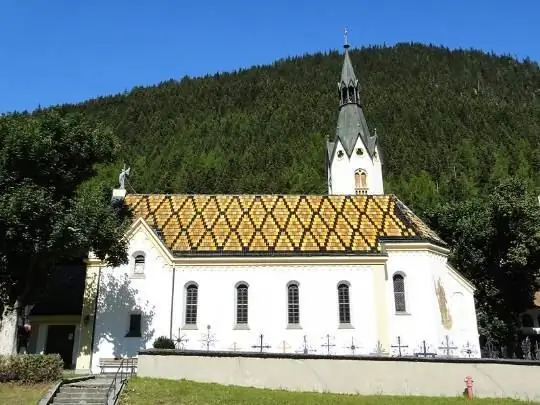
Description of the attraction
The village of Mathon is located in the Paznauntal valley a few kilometers from Ischgl. Mathon and Ischgl are connected by several hiking trails, during which travelers pass through very picturesque protected areas, as well as regular bus service. Therefore, almost every guest who comes to rest in Ischgl ends up in Mathon after a while.
The main attraction of this town is the Church of St. Sebastian - a majestic structure with snow-white facades and one bell tower, erected in 1674 and consecrated in 1682. In the book "General History of Mathon", written by Kaplan Shett in 1895, it is mentioned that before the appearance of this church there was in the 15th century, there was already a Gothic temple, which was later transformed into a presbytery and became part of the current sacred building. The church was run by a chaplain, whose income was very low, so he took over a small farm. The financial position of local chaplains changed for the better only in 1789, when they received another church title.
The first reconstruction of the church took place in 1763 - more than 80 years after its construction. In 1772, a chapel of the Epiphany was added to the temple, and two years later, the construction of the local Kalvariya began 100 meters from the temple.
In 1881, the Church of St. Sebastian was renovated again. It was rebuilt in a neo-Romanesque style. From the previous baroque decoration, only two altar figures of St. Sebastian and St. Roch have survived.






